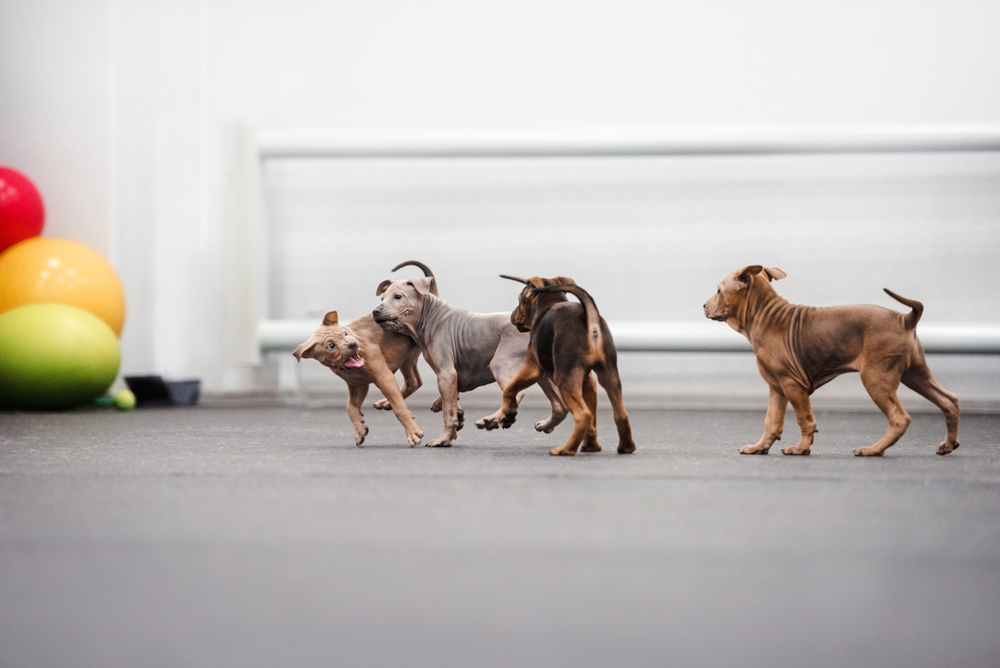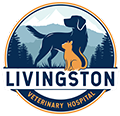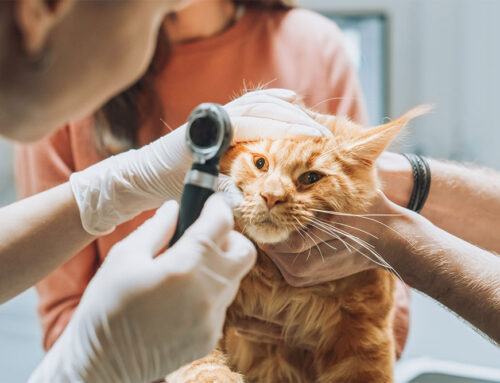Bringing home a puppy is exciting, but can be overwhelming, too. Where do you start, with so much to think about? Your Livingston Veterinary Hospital team is a great resource for all things puppy. Here are five tips for the best possible start with your new pal.
#1: Gather puppy supplies
Before your puppy comes home, you’ll need to gather some basics.
- Leash, collar, and identification tags — You’ll need these basic safety tools to keep your puppy secure outside. A harness may be a good option for some breeds.
- Crate — The crate serves as your puppy’s “den,” and is the foundation for potty training and learning to spend time alone. Choose a size that will comfortably fit your full-grown dog, and use a divider if your puppy is much smaller than the crate.
- Toys and chews — Puppies love to play, so they need lots of toys. Test a variety to see what they like, and always supervise playtime. Remove any damaged toys from the rotation to reduce their risk of swallowing pieces. Look for stuffing-free, durable toys if your puppy likes to destroy things. Freezable or soft rubber teething chews are also important for puppies. Bones and antlers can break your puppy’s teeth, and rawhides may be difficult to digest, so look for alternative products.
- High quality food — Puppies must eat a diet specifically formulated for their life stage and breed size to ensure proper growth rates, so look for this information on the bag. The food should also meet or exceed Association of American Feed Control Officials (AAFCO) standards, which should be stated on the label. Talk to your veterinarian about the best food for your puppy.
#2: Puppy proof the house
Puppies investigate everything, and they do so with their mouths. To puppy proof, get down at your puppy’s level to see everything they might get into. Anything that could be chewed should be removed or protected, with special attention to these items:
- Electrical cords — Hide any unmovable cords with metal or PVC cord tunnels.
- Table legs and walls — Cover the corners of these items with corner protectors.
- Cabinets – Place child locks on cabinets, to keep contents secure. To be doubly safe, place any toxic substances (e.g., medications, cleaning supplies) up high, in case the child lock fails.
- Trash cans — These are a favorite for dogs of all ages! Invest in trash cans with solid lids.
- Children’s toys — Small items and stuffed animals are prime targets. Teach kids to pick up after themselves, to avoid any puppy drama.
- Valuables — Plain and simple—keep anything valuable in a safe place that your puppy cannot access.
#3: Establish a routine and start basic training
Once you bring your puppy home, establish a routine right away. Puppies sleep about 20 hours a day, with the rest of their time spent eating, playing, or eliminating.
- Mealtimes — Mealtimes should be three times per day, and should be consistent. Feed your puppy in their crate to help them focus on mealtime, and to create a positive association with the crate.
- Crate training — The crate should be a positive place where your puppy feels safe—never use the crate as punishment. Ask them to enter the crate each time you leave them unsupervised, and have them sleep there, as well. Provide a special treat or toy, such as a Kong with a small amount of filling, each time they go into the crate. Regardless of your plans for when they are older, all puppies should be crate trained while they are young. Calmly accepting crating is an invaluable skill that your dog will use throughout their lifetime, and crate training goes hand in hand with potty training.
- Potty training — Potty training requires patience. Remember—all puppies have accidents, so invest in good cleaning products. Never punish your puppy for an accident if you didn’t see it happen. Instead, praise your puppy when they potty outside and direct them to the correct area if you catch them in the act. Take your puppy outside first thing in the morning, after every meal and every play session, and the last thing before bed.
#4: Schedule a veterinary visit
Take your new puppy to the veterinarian a week or two after bringing them home. Your first veterinary visit will serve as a general health check, and is also a great time for you to ask questions. Your veterinarian and veterinary technicians are excellent resources for puppy information, so use them, and listen carefully to their advice.
Your veterinarian will discuss vaccinations at your puppy’s first visit. Distemper/parvovirus, rabies, and kennel cough vaccines are recommended for all puppies. The distemper combination is a series of three or four vaccinations, given four weeks apart until 16 weeks of age. This vaccine protects against several deadly viruses, and is given this way to overcome interactions from antibodies the puppy acquired from their mother’s milk. If the vaccination series is not completed, protection will last only a few weeks.
#5: Socialize your puppy and take a puppy class

The best time to socialize your puppy is between 3 and 16 weeks of age, but you should not start until after their first set of vaccines. The goal of socialization is to expose your puppy to new things, always keeping the experiences positive, and moving at your puppy’s pace. Introduce them to different types of people, accessories such as hats and glasses, objects such as bicycles and wheelchairs, other pets and animals, and different environments. If you can, sign up for a puppy class so they can meet other puppies, and learn some basic commands. Talk with the trainer about common issues, and ensure any trainer you work with uses positive reinforcement methods.
Puppies can be a real handful, but remember to enjoy this time as your puppy grows and experiences the world each day. Your Livingston Veterinary Hospital Team is here to help every step of the way. Call us to schedule your new puppy’s first visit, or with any questions about puppy care.







Leave A Comment